Worship
The Problems of a Contemporary Hajj Part 2
Published
By
Guests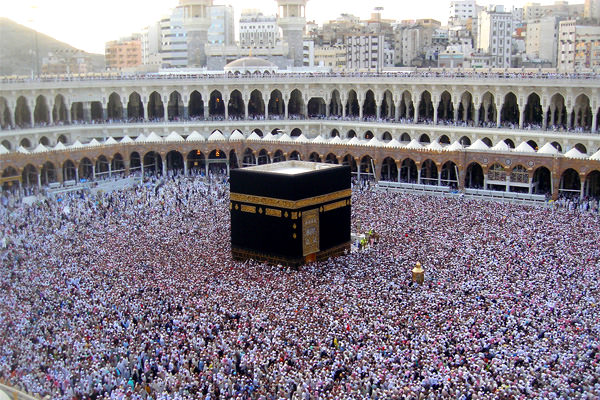
This is Part 2 of the Problems of a Contemporary Hajj series. To view Part 1 click here
There is little evidence that, since the 1990’s, Saudi authorities thoroughly considered the impact of these numbers, which have swollen so monstrously that one is compelled to abandon sunan. For example, the sunnah of raml (for men) is practically impossible to perform, and to pray at the maqām-Ibrāhīm after ṭawāf means risking one’s head being pummeled. Kissing the black stone is truly perilous as previously mentioned, and the qiyām of ‘Arafāh is cut short for tens of thousands who arrive there only shortly before sunset. The same is also true of Madīnah where praying in Raudat-ul-jannah is all but impossible. The distinctiveness of Hajj (its specific location, time, specific rites) means that normal acts of worship during these holy days are lessened: prayers are shortened and combined and there is a specific time designated, from the sunnah, for rest (20). This time is for reflection, contemplation, and dhikr. The way a contemporary Hajj operates though is not always conducive to the intended objectives of these Hajj rites; In my group, many of us did anything but rest on ‘the days of rest’.
More disturbing are acts of oppression committed by some pilgrims. On the day of ‘Arafāh buses are unable to cope with the numbers to transport from Mina to ‘Arafāh, where qiyām is the major pillar of Hajj without which it is invalid. In 2009, some pilgrims, fearing that they would not make it to ‘Arafāh before sunset, punched and kicked their bus drivers/Ministry of Hajj workers and effectively hijacked the buses, which were arriving at ‘Arafāh with ihrām-clad drivers and ‘bloody’ officials.
Keep supporting MuslimMatters for the sake of Allah
Alhamdulillah, we're at over 850 supporters. Help us get to 900 supporters this month. All it takes is a small gift from a reader like you to keep us going, for just $2 / month.
The Prophet (SAW) has taught us the best of deeds are those that done consistently, even if they are small. Click here to support MuslimMatters with a monthly donation of $2 per month. Set it and collect blessings from Allah (swt) for the khayr you're supporting without thinking about it.
In such harrowingly jammed and overcrowded circumstances, there will always be ‘unpleasantries’. Mina bears the burden of the entire pilgrim community for some days but boasts only, to say the least, meager and basic toileting facilities. To make wudu alone could take around 45 minutes and to use the toilets on top of that, even for the briefest of moments, could render a ‘toileting’ time of over an hour. My heart went out to those poor souls who enthusiastically vowed not to use the toilets, horrified by the sight of a hole in the ground above which hovered a pipe of sorts which would hopefully act as a shower – I say hopefully because I turned it on once only to hear a shriek from the man in the neighboring cubicle who, after having queued for an hour to relieve himself, got soaked by a diagonal water-stream from my shower pipe. I can’t remember if I apologized; we were all accustomed by then to such ‘mishaps’. The only other pipe was one which provided water for ‘istinja’, but all too often it was found deep in the hole courtesy of the person who had used it previously. Hygiene was not great. There was no soap. I absent-mindedly left mine there once and returned five minutes later to retrieve it but found that a full bar had transformed into a miserable sliver of soap with someone’s pubic hair embedded within it. As fate would have it, those who feared these toilets the most ended up contracting diarrhea from the poor hygiene and therefore needed to use them the most. The lowest point by far, however, was a British Iranian lady who, still in full burka, sprayed liquid stool through her clothing all over the back of a full coach! Nothing is impossible when there are this many numbers in these conditions. I appreciate these details may be somewhat brazen for some people – but all should be prepared for Mina.
In fact, such was the volume of sewage that apparently pipes could not cope; in the picture below a pipe had burst to reveal open sewage, also in Mina, which pilgrims were walking through en route to stone the jamarāt.
Photograph 3 – Pilgrims walk through open sewage
Pilgrim numbers in Mina were so great that some people in groups such as mine had no tent space to sleep in – due, in part, to an unscrupulous Hajj operator – and were forced to wander the alleyways whilst others slept. Lack of sleep confounds an already exhausting schedule.
Photograph 4 – Satellite image of Makkah (Google Earth)
Finally, this satellite image indicates something remarkable with regards to the issue of swelling numbers: on the right side of this picture is Mina, visible as a large white mass of tents. At the top left of the picture is the white marble of the Holy Mosque (in which is the Ka’bah). Imagine then that every pilgrim living in the huge area of Mina (2.5-3.0 million pilgrims) has to go to the Ka’bah to make ṭawāf-al-ifadah and sa’ee within three days after the jamarāt, and then ṭawāf-ul-wida (the farewell ṭawāf) once more on leaving. The discrepancy in size, clearly visible, between Mina and the Holy Mosque (the capacity of which is around 1 million (21) when rammed together) is consistent with the suffocating crowds around the Ka’bah in the final days of Hajj.
I have dwelled on the problem of overcrowding and the huge numbers of people performing Hajj because it detrimentally impacts everything from people’s behavior, the performing of sunan and worship, the ruining of holy sites/relics, and horrible amounts of pollution (see below). The numbers of pilgrims visiting this land is around 60 times as many people as compared to the Prophetic Hajj. The land cannot cope, and many pilgrims have died sadly from stampedes and crushes (22) for lack of control in this regard.
Below I go on to mention a few specific repercussions as a result of the general phenomenon of overcrowding. The first is that of pollution, specifically in Makkah.
Disrespect for the Sacred Land: Pollution & Behaviors
Many who write accounts of the desert, such as Muhammad Asad in ‘The Road to Makkah’, speak of its magic, and Asad specifically goes so far as to link it with tawhīd (23). This is of course a viable link when one considers the introspection the desert compels one to engage in given its vast, desolate, and silent landscape. The bigger questions of life cannot but pervade one’s mind in such circumstances. With that isolated quality comes too an unspoiled landscape and purity of air. Makkans in the time of the Prophet would send their young children into the desert to make them strong whilst protecting them from the poorer air quality of their trading city. That notwithstanding, I was disappointed with how pollution in Makkah was so overwhelmingly ubiquitous. It saddened me that the Sacred Land was left in this way, whilst our Jewish and Christians colleagues took great care to beautify and purify their cities such as Jerusalem and the Vatican city. If ‘purification is half of faith’, then this ḥadīth has been forgotten with regards to Makkah. Although my intention was to speak of pollution as an effect of out of control numbers of people – which it undoubtedly is – it also links with another phenomenon: that of sheer indifference and disrespect in attitudes for the sanctity of the Holy Land. I will speak of both below.
Makkah itself must suffer one of the worst air qualities of any city on earth. It is not air with diesel but mainly diesel with a little air (‘airy’ diesel) that one finds themselves inhaling. In a country where petrol is far cheaper than water buses are left running for hours at a time even when stationary and not in use; no one seems to care about the incredible amounts of fuel that must be wasted.
Several accounts from the jet age describe the problem of motor vehicles. Jalal Ahmad spoke of trucks constantly having to brake due to phenomenal numbers of people in the streets, and Sonya (Saida) Miller spoke of it taking half the night to cover 5 miles. Traffic jams there must be the worst on earth; in 2009 I spent 45 minutes in a car and moved only 1 meter – the driver said it would take 4 hours to go from the jamarāt to the Haram Mosque, a journey of a few miles.
It struck me that in my home city, London, hydrogen buses with water vapor exhaust fumes were being trialed in order to improve air quality. And yet if the most Sacred land on earth is not worthy of such technology – what city is? If only those stationary buses left running for hours would be turned off, who knows how many thousands of liters of fuel per year would be saved. But it is the attitude, the indifference to ‘israf’ (wastefulness) in the very birthplace of Islam – a religion which condemns it and demands purity from its adherents as part of faith – that was most perturbing.
Far too many people are obdurate in their lack of respect for the sanctity of the land they are on, something manifesting itself in at least the following ways: their throwing vast amounts of rubbish, food, & packaging outside the Mosque when there are bins within ten feet of them; their deliberate ignoring of the rules – one gentleman from Pakistan’s NWFP thrust his mud and blood soaked foot into water clearly marked Zam Zam drinking water and when challenged retorted that these were rules of the Saudi king and not for him to obey. The most repugnant scene was that on the 1st floor of the sacred mosque in the days immediately preceding the 8th Dhu’l-Ḥijjah when there was commotion in the area of ṭawāf; the ‘men in green’ (official cleaners) swiftly moved in cordoning off that area and getting to work. It seemed someone had defecated in the mosque, and the thick crowd had stepped in it spreading a trail of feces. Presumably the culprit was not ill since the stool was formed (i.e. no diarrhea)!
The most shocking scenes of littering I saw were at Muzdalifah, but I did not have a camera to capture it. I did, however, capture the images of Mina after about two days worth of residence there.
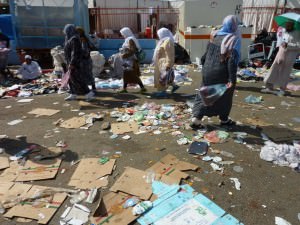
Pilgrims actions made it resemble a refuse tip from a 3rd world country rather than Sacred Land.
The lack of respect for Sacred Land is not only manifested in the way it is treated physically, but also in the attitudes and behaviors displayed by pilgrims.
In contemporary times the manners and behaviors of hajjis, who admittedly are from all walks of life, social classes and cultures, are too often astonishingly bad, and lacking even in basic requirements of propriety. I can accept that in such dense crowds one’s personal space of course crumbles; I can even reluctantly accept that it is common to find oneself in a stranger’s armpit, or even to be thumped every now and again, but surely one should not have to suffer various indignities such as: ‘pilgrim chains’ led by the largest member violently thumping anyone in his way; or having their ihrams (the waist-cloth so precariously hung in the first place!) pulled downwards to push them out of the way. Impatience is omnipresent, and it can be lethal, especially at exits and escalators where people refuse to wait, instead choosing to heave and push – people die in these situations from crushing or have their feet caught in the steel of the escalators causing flesh to be gauged out (shoes are not worn in the mosque). Some nationalities obstruct Sa’ee with groups of 40-50 sitting down in the middle of the conduit to chant, lament, and cry.
These narcissistic tendencies are seen also at the jamarāt, where despite the rule forbidding people from bringing their luggage (since it was the clear cause of the numerous deaths during stampedes in previous years) they bring it, well aware of the potentially lethal risk it causes others. At the jamarāt, people still hurl their pebbles from a distance, striking others in the back of the head or the face as they are turning. In Mina one will witness such feats of selfishness it is easy to forget one is on Hajj – and, all too often, I found it was from the people one would least expect it (given their practicing appearance). All of the various things mentioned above are predominantly, I believe, as a result of the stresses from overcrowding which inevitably brings out the worst in people, although quite clearly we as an Ummah are not all as elegant in our characters as our sacred texts require us to be.
Interestingly, the gargantuan numbers of people coming for Hajj also brought to the fore an interesting fundamental tension between the visiting pilgrims, and the inhabitants of the Holy Sanctuaries, who consist of settled pilgrims (24) as well as indigenous Arabs. This sort of tension has always been there, yet these two groups of people reluctantly need each other in a forced interdependence. The visiting pilgrims are a source of revenue that has driven Makkah’s economy since apparently antediluvian times. Today it is no different, and the sustenance of many businesses in Makkah relies on Hajj and year round Umrahs. But whilst the Hajjis bring in necessary revenue, they bring with it some huge disruption, traffic, littering, diseases etc, along with some unflattering behaviors. It is clear, at least in the Hajj season, that visiting pilgrims are an annoyance; the irritation palpably visible on the local’s faces. Many locals look down at pilgrims with a sort of contempt that does not go unnoticed, and a viscous cycle ensues: the pilgrims disrupt and lack respect for their hosts, who in turn treat them with degrees of racism and condescension. Ask any pilgrim about how they compare the people of Makkah with those of Madīnah, Madīnah will receive glowing accolades.
The dynamics of this relationship between Muslims who experience the Hajj very differently (service users vs. providers) is interesting. It might be accurate to suggest that the state of affairs in Makkah during Hajj reflects, more broadly, the state of affairs of the Ummah itself. Consider, for example, footnote 43 Ibn Jubāyr’s words as cited by Wolfe (coming in the next section), and Sharīf Muhammad b. ’Awn’s remarks in 1842 about a past he remembered:
“All remained pure during the pilgrimage period, and prayer and the reading of the traditions of their prophet were their sole occupation…” (25)
Only then to contrast it with his present, about which he said:
“..all engage in commerce, and the spirit of speculation has replaced piety in their hearts. And their conduct, alas, during the pilgrimage period. May God preserve your eyes from the sight of their shameful acts” (26)
Whilst the visiting pilgrims may have much to answer for, the locals too (i.e. lay people and authorities) are not beyond reproach. In fact, I found it worthy of note that the Cordoban, Ibn Jubāyr, remarked 800 years ago in 1183CE:
“The majority of these peoples are sectarians and schismatics divided into various doctrines. They have no real religion. They treat foreign pilgrims worse than they treat Christians and Jews under their tribute, seizing most of the hajjis provisions, robbing them blind, and finding new ways to divest them of their goods”
Few non-Arabs would deny things are much different today. From the moment one enters the country at immigration till the moment one leaves there is a constant reminder that the hajjis are like a pharmakon (27), simultaneously a harm and a benefit. When Hajj is over, perhaps locals breathe a sigh of relief. But as unpleasant as it may be for them, it justifies neither the exploitation and corruption, nor the lack of recourse to remedy wrongs.
Saudi authorities do not seem to collect, and certainly do not make public, data on corruption or exploitation. There cannot thus be a comprehensive account about it – one can merely highlight that such practices still exist and that there is much to be done in remedying this.
Historically, ever since 1201CE when Sharīf Qitada captured the Haram, his descendents reigned whilst embroiled in blood feuds, war, and fratricide. As a result, rampant corruption was endemic till 1925 (when the family’s rule was ended by Wahhabis). A sad account was that of the Begum of Bhopal (28), an astute and intelligent provincial ruler of a million people. Indian rulers would at that time lend great support to an impoverished Arabia with gifts to the Holy Mosques, free ship transport for Indian pilgrims and hostels and schools in the Peninsula. Her account of 1864 is one of systematic ‘official’ and unofficial looting. She was taxed arbitrarily by all sorts of Arabian governors, lynched by mobs, raiding parties, and last but by no means least by the Sharīf of Makkah, who himself took ¼ of all her gifts. She could not even make ṭawāf in peace, endlessly harassed for money. Corruption was rife and endemic, and looting was seen as acceptable, if not recommended by corrupt authorities and individuals. In 1925, it was the Wahhabi wars which brought an end to this extreme corruption and the moral ills of freely available alcohol, music, dancing girls, and inappropriate free mixing etc (29) (that was mentioned by Hajjis at least as early as Muhammad Farhani in 1885) – albeit with somewhat excessive harshness and loss of civilian Muslim life.
Thankfully the situation is not like that at present, but exploitation of visitors is very much alive. In our group of 2009 a young British pilgrim waned with high fever and exhaustion the day after ‘Arafāh. Unable to walk and needing to get back to his camp in Mina at night, taxis refused to help unless paid £250 (for a journey of a few miles from Makkah to Mina). Hotels in Makkah offered an inflated rate of £2000 for the night (for a room normally worth no more than £100/night). Those from poorer backgrounds, far more vulnerable than us, were treated much worse.
There is also much to be said of tour-operators who sell Hajj packages in the UK; a small but significant number are fraudulent, robbing people of money with no intention at all to run a Hajj tour. Others deceive their customers with promises of premium facilities and charging premium rates only to renege on their promises with substandard accommodation and a wealth of unlikely excuses (30). On the other hand, some countries, such as Iran and Malaysia, are known for organizing Hajj trips very well with little exploitation and very happy, grateful hajjis.
For now it seems this behavior will continue as it has done for centuries since authorities are not taking action. There are few avenues to complain in confidence, and the locals themselves, far from morally reprimanding each other, instead reinforce each others’ behavior.
Thus far I have spoken of the vast overcrowding which leads to numerous other problems ranging from pollution to illnesses/injuries, impatience and to a diminished spiritual experience. I have also spoken about the disappointing attitudes and behaviors of some hajjis, who have come to make the spiritual journey of a lifetime but forget themselves and the Prophetic Sunnah which they are supposed to be emulating. Finally I spoke briefly of the equally disappointing condescension and exploitation from some of the hosts towards visiting pilgrims despite the former’s financial reliance upon the latter. Before concluding, however, I wish to speak of something on an altogether different note that I alluded to in the introduction: first is the aesthetics of worship – in relation to the historical sites and relics in Arabia; and secondly, the future vision that the current custodians of the Sacred Precincts have for Makkah.
20 Specifically the 8th Dhu’l-Ḥijjah in Mina (yawm-ut-Tarweah) and the night in Muzdalifah after standing at Arafat
21 Wolfe p. 532 – Though this figure seems unrealistic. Other sources (eg. http://www.encyclopedia.com/doc/1G1-124264884.html ) have reported capacities of 860,000.
22 See for instance Wolfe pgs. 476, 481
23 See “Muhammad Asad Speaks on Bedouins & the Desert” ( http://www.youtube.com/watch?v=mtcbukncXvA&feature=related , 12 seconds into the video)
24 The Begum of Bhopal remarked in1864, “Almost all the bad characters that have been driven out of India may be found in Makkah” [Wolfe p. 233]
25 Peters, p. 266
26 Peters, p. 266
27 A Greek word used in reference to something that is both a poison and a cure.
28 A town in India
29 Wolfe, p. 192
30 In my own group, after making “70 excuses” or more, there was a collective decision to sue the tour operator.
Keep supporting MuslimMatters for the sake of Allah
Alhamdulillah, we're at over 850 supporters. Help us get to 900 supporters this month. All it takes is a small gift from a reader like you to keep us going, for just $2 / month.
The Prophet (SAW) has taught us the best of deeds are those that done consistently, even if they are small. Click here to support MuslimMatters with a monthly donation of $2 per month. Set it and collect blessings from Allah (swt) for the khayr you're supporting without thinking about it.

Can You Fatwa Shop with AI? The Answer Might Surprise You

Quebec Introduces Bill To Ban Prayer Rooms On College Campuses

Far Away [Part 2] – Alone

Restoring Balance In An Individualized Society: The Islamic Perspective on Parent-Child Relationships

The Limits Of Obedience In Marriage: A Hanafi Legal Perspective

Op-Ed – When Islamophobes Try To Intimidate Us, They Underestimate Our Resolve: A Call to Stand With America’s Muslim Students

Who’s Afraid Of Dr. Naledi Pandor? – Zionist Panic and a Visa Revoked

Ahmed Al-Ahmed And The Meaning Of Courage

AI And The Dajjal Consciousness: Why We Need To Value Authentic Islamic Knowledge In An Age Of Convincing Deception

Moonshot [Part 32] – FINAL CHAPTER: A Man On A Mission

[Dhul Hijjah Series] Calling Upon the Divine: The Art of Du’a (Part 1)

IOK Ramadan 2025: Four Steps | Sh Zaid Khan

IOK Ramadan 2025: Do Your Best | Sh Zaid Khan

IOK Ramadan 2025: Giving Preference to Others | Sh Zaid Khan

IOK Ramadan 2025: Which Group Are We In? | Sh Zaid Khan
Trending
-
#Life4 weeks ago
Op-Ed – When Islamophobes Try To Intimidate Us, They Underestimate Our Resolve: A Call to Stand With America’s Muslim Students
-
#Current Affairs4 weeks ago
Who’s Afraid Of Dr. Naledi Pandor? – Zionist Panic and a Visa Revoked
-
#Current Affairs1 month ago
November 29 Is The International Day Of Solidarity With The Palestinian People – What Will You Do?
-
#Society1 month ago
Op-Ed: What Muslims Will Really Be Talking About Over the Halal Turkey This Thanksgiving
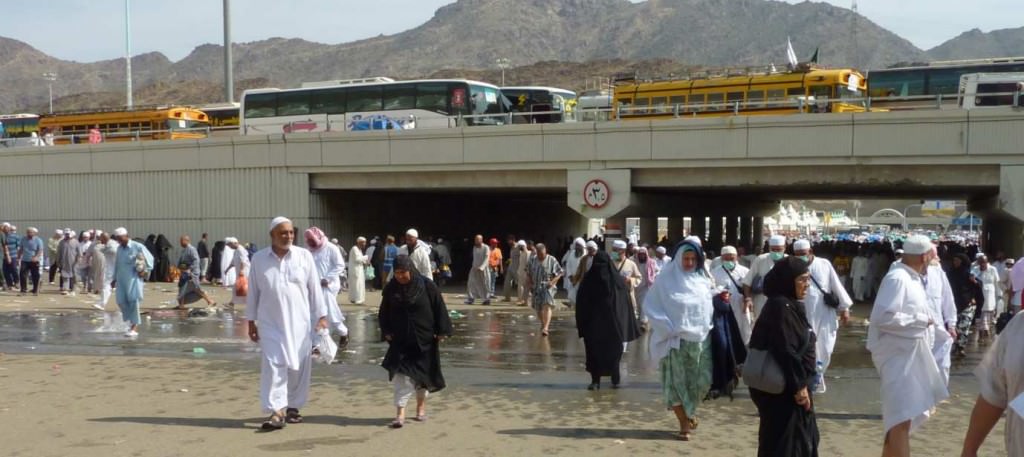
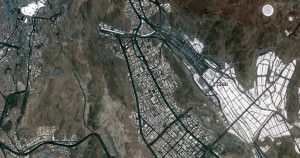
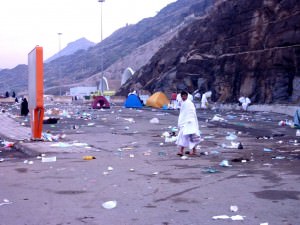










mw_m
October 16, 2011 at 8:54 AM
Anyone able to forward this to brother abdullah? Maybe he’ll do something about it ;D
Leo
October 16, 2011 at 12:42 PM
I went hajj last year so your article struck a cord with me. I share your grievance about the overcrowding. Every Muslim has the right to go hajj but there are people who go every few years. Many people cant afford hajj, I understand supply and demand and hence the inflated prices, but those regulars don’t help those who are struggling to go for the first time. Do you think it would help if there were restrictions on the number of times one can get a visa? Of course there would be exceptions eg hajj badal, shuyukh etc
Umm Ousama
October 18, 2011 at 1:49 PM
Assalamu alaikum,
I think the following is the root of all the problems in your Hajj experience:
If the people who take you to Hajj do not fear Allah and don’t do their job properly, why do you expect others to do their job properly.
Again, Hajj is about patience and, unless we go back to the time of Rasulullah (salla Allah alayhi wa sallam), there will be fitna.
Abu Qool
October 18, 2011 at 3:43 PM
I think people should do Hajj in groups of 4 max. Our group had a lot of issues, but we basically did everything on our own and ended up completing all rituals on time without any issues.
Abu Ibrahim
October 19, 2011 at 12:21 PM
Jazakallahu kheir for this insightful article. I think it is a healthy and important contribution to the Hajj literature. I have not gone to Hajj, and insha’Allah, look forward to doing so. I think that the most important point that I learned from your article is that the Muslims must strive to make Hajj better and easier. I think criticism of one’s own group, especially the Muslims, is needed most. We have to begin to correct ourselves. I don’t think Hajj has to be difficult in order for it to be accepted. May Allah bless the Saudi authorities for what they have done to accommodate the Hujjaj. However, if we put aside the Saudi authorities, Hajj could be much easier and beneficial if we just change our own attitudes, clean up after ourselves, and strive to implement proper Muslim mannerisms. This will solve the majority of the problems. Thanks again for this article.